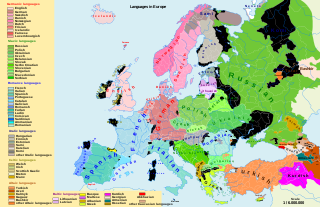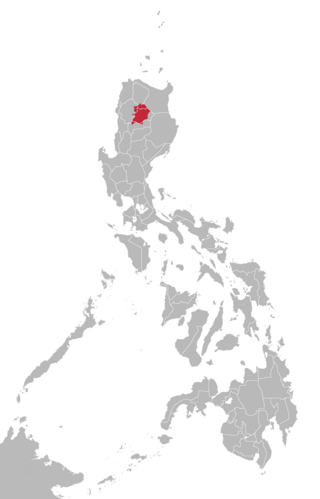Related Research Articles

There are over 250 languages indigenous to Europe, and most belong to the Indo-European language family. Out of a total European population of 744 million as of 2018, some 94% are native speakers of an Indo-European language. The three largest phyla of the Indo-European language family in Europe are Romance, Germanic, and Slavic; they have more than 200 million speakers each, and together account for close to 90% of Europeans.
Ethnologue: Languages of the World is an annual reference publication in print and online that provides statistics and other information on the living languages of the world. It is the world's most comprehensive catalogue of languages. It was first issued in 1951, and is now published by SIL International, an American evangelical Christian non-profit organization.
Luhya is a Bantu language of western Kenya.

Kalinga is a dialect continuum of Kalinga Province in the Philippines, spoken by the Kalinga people, alongside Ilocano. The Banao Itneg variety is not one of the neighboring Itneg languages.
The Nimboran languages are a small family of Papuan languages, spoken in the Grime River and Nawa River watershed in Jayapura Regency, that had been part of Stephen Wurm's Trans–New Guinea proposal. However, when proto-Nimboran pronouns are reconstructed (*genam "I" and kom or komot "thou"), they have little resemblance to the proto-TNG pronouns *na and *ga. Usher places them in a North Papuan stock that resembles Cowan's proposal.

Kawaimina is a cluster of four languages and dialects of East Timor:
Elseng is a poorly documented Papuan language spoken by about 300 people in the Indonesian province of Papua. It is also known as Morwap, which means "what is it?" ‘Morwap’ is vigorously rejected as a language name by speakers and government officials.

Cameroon is home to at least 250 languages, with some accounts reporting around 600. These include 55 Afro-Asiatic languages, two Nilo-Saharan languages, four Ubangian languages, and 169 Niger–Congo languages. This latter group comprises one Senegambian language (Fulfulde), 28 Adamawa languages, and 142 Benue–Congo languages . French and English are official languages, a heritage of Cameroon's colonial past as a colony of both France and the United Kingdom from 1916 to 1961. Eight out of the ten regions of Cameroon are primarily francophone and two are anglophone. The official percentage of French and English speakers is estimated by the Presidency of Cameroon to be 70% and 30% respectively.
Kemtuik (Kemtuk) is a Papuan language of Kemtuk and Kemtuk Gresi Districts, Jayapura Regency, Indonesia. It is very close to Gresi. It is spoken in Aib, Aimbe, Braso, Mamda, Mamdayawang, Meikari, Merem, Sabeyap, Sabeyap Kecil, Sabron Yaru, Sabransamon, Sekorup, and Yanim villages.
Kayan is a dialect cluster spoken by the Kayan people of Borneo. It is a cluster of closely related dialects with limited mutual intelligibility, and is itself part of the Kayan-Murik group of Austronesian languages.
Mumeng is a dialect chain of the Austronesian family in Morobe Province, Papua New Guinea. Dambi–Kumalu and Patep–Zenag–Gorakor have a degree of mutual intelligibility. Kapin may belong as well.
Kinabatangan is a language of Sabah, Malaysia.
Lamaholot, also known as Solor or Solorese, is a Central Malayo-Polynesian dialect cluster of Flores, Indonesia. The varieties may not be all mutually intelligible; Keraf (1978) reports that there are 18 languages under the name.

Itneg is a South-Central Cordilleran dialect continuum found in the island of Luzon, Philippines. This language and Ilocano are spoken by the Itneg people in Abra.
West Arawe is an Austronesian dialect chain of West New Britain, Papua New Guinea. The principal varieties are Apalik, Gimi, Aiklep, and Arawe proper (Solong).
Kimaragang (Marigang), Tobilung, and Rungus are varieties of a single Austronesian language of Sabah, Malaysia. The three varieties share moderate mutual intelligibility. Children are not learning it well in some areas.
Masela (Marsela) is the language of Marsela Island in southern Maluku, Indonesia. Regional varieties are distinct; Ethnologue counts it as three languages.
The Albania Billie Jean King Cup team represents Albania in Billie Jean King Cup tennis competition and are governed by the Albanian Tennis Federation. They currently compete in the Europe/Africa Zone of Group III.
References
- ↑ Gresi at Ethnologue (25th ed., 2022)
